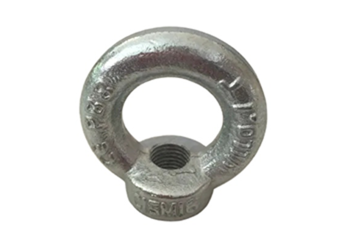des. . 03, 2024 16:53 Back to list
installing a sleeve anchor
Installing a Sleeve Anchor A Comprehensive Guide
When it comes to securing fixtures and structures to concrete, sleeve anchors are a reliable choice for both professionals and DIY enthusiasts. They provide a strong hold, making them ideal for a variety of applications, including installing shelves, brackets, and even large machinery. This guide will walk you through the essential steps for effectively installing a sleeve anchor.
Materials and Tools Needed
Before diving into the installation process, it’s crucial to gather all the necessary materials and tools. Here’s what you’ll need
Materials 1. Sleeve anchors 2. Concrete (if you're pouring new) 3. Washers (if not included with the anchor) 4. Nuts (if not included with the anchor)
Tools 1. Hammer drill 2. Masonry drill bit (matching the anchor size) 3. Wrench or socket set 4. Vacuum (for cleaning dust from the hole) 5. Safety goggles 6. Measuring tape 7. Level
Step-by-Step Installation
1. Choose the Right Anchor Size Selecting the appropriate sleeve anchor size is crucial. The anchor's diameter and length depend on the load it needs to support and the thickness of the material it will be mounted into. Check the manufacturer’s specifications for load ratings and recommendations.
2. Mark the Drill Points Using a pencil or marker, outline where you intend to install the sleeve anchor. Make sure the marks are level, especially if you are mounting multiple anchors in a line.
installing a sleeve anchor

3. Drill the Hole Using a hammer drill and masonry drill bit, drill into the concrete at the marked points. The hole should be slightly deeper than the length of the sleeve anchor to ensure a secure fit. For best results, clean out the dust and debris from the hole after drilling, using a vacuum or compressed air. This step is essential because it allows the anchor to achieve maximum grip.
4. Insert the Sleeve Anchor Take the sleeve anchor and insert it into the drilled hole. Ensure that the anchor is flush against the surface of the concrete. If the anchor is longer than necessary, you may need to trim it to fit your requirements, but this is often unnecessary.
5. Tighten the Anchor Using a wrench or socket set, tighten the nut on the sleeve anchor. The sleeve will expand against the sides of the drilled hole as you tighten, creating a solid grip. Be careful not to overtighten, which can lead to cracking the concrete.
6. Attach the Fixture With the sleeve anchor securely installed, you can proceed to attach the fixture you initially planned to secure. Use the appropriate washers and nuts if required. Again, ensure everything is level before finalizing the installation.
Final Tips
- Safety First Always wear safety goggles during drilling to protect against flying debris. - Check Load Capacity Make sure to review the weight capacity of the anchors being used, especially for heavy fixtures. - Weather Considerations If you're installing sleeve anchors outdoors, consider using anchors that are corrosion-resistant to withstand environmental factors.
Conclusion
Installing a sleeve anchor is a straightforward process, provided you follow the necessary steps and safety precautions. By selecting the right sized anchor and ensuring a clean installation, you can achieve a sturdy and durable hold in concrete that will last for years. Whether for small home projects or larger installations, sleeve anchors offer flexibility and reliability, making them a staple in construction and DIY projects alike.


